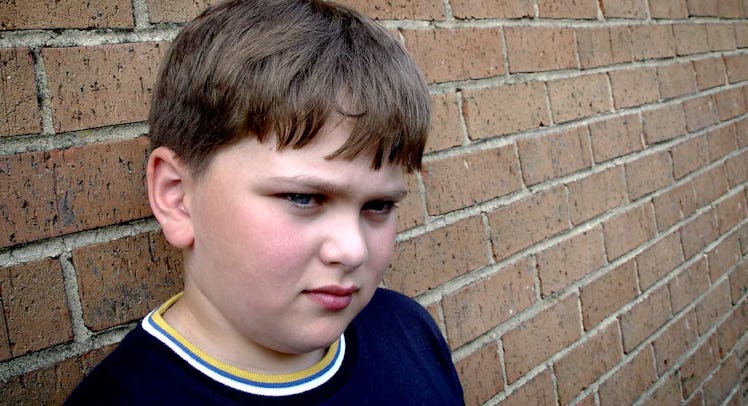The Most Vulnerable Victims of Bullying Know Who They Are
Understanding suicide risks doesn't just mean documenting harmful behaviors. It means understand how kids see themselves.

Bullying, as many people know, can be a tremendously painful experience for a young person. The point has been driven home over the last decade by stories about teens like Phoebe Prince or Amanda Todd, who killed themselves after experiencing bullying.
Recently, the parents of eight-year-old Gabriel Taye filed a federal lawsuit against the Cincinnati public schools, alleging that their son committed suicide because the school covered up and failed to prevent a culture of bullying.
All 50 states have some kind of anti-bullying law, and schools are increasingly being called upon to implement bullying prevention programs.
Bullying and suicide are both significant public health concerns for children and adolescents. As a scholar with expertise in youth violence and bullying, I’ve done considerable research to understand the link between bullying and suicide. Although there certainly is a connection between the two, research highlights the complexity of the relationship.
This article was originally published on The Conversation. Read the original article by Professor Melissa Holt, Associate Professor, Counseling Psychology, Boston University.
Bullies and their victims
Many studies have examined the relationship between bullying and suicidality, or the tendency to have suicidal thoughts and behaviors. We wanted to see what these studies could tell us about the strength of this association: Is being bullied or bullying others associated with suicidality?
To find out, we conducted an analysis of 47 studies on bullying and suicide among students in K-12 settings. The studies were from the United States and several other countries (including China, Australia, the U.K. and Finland).
How to Prevent Child Bullying
- Intervene in bullying immediately, regardless of if your child is being bullied or is the bully. Research says children who suffer from or cause bullying can develop low self-esteem, depression, and suicidal behavior.
Overall, we found that youth involved in bullying in any capacity – both bullies and victims of bullying – were more likely to think about and attempt suicide than youth who were not involved in bullying. In short, bullying is bad for everyone involved.
We also found that bullying and suicidality are most strongly related for bully-victims: youth who have experienced both sides of bullying, as victim and perpetrator. This is consistent with past research suggesting that bully-victims are at particularly high risk for experiencing mental health issues such as anxiety and depression.
Who is most at risk?
In addition to questions about bullies versus victims, we examined three factors in the association between bullying and suicidality: gender, country and how bullying is measured.
While associations between bullying involvement and the tendency to have suicidal thoughts or behaviors were similar for boys and girls, we did find a difference when it came to the country of origin for these studies. In general, there were stronger associations between bullying and suicidality in the U.S. studies compared to their international counterparts.
As a whole, studies also showed a stronger connection between being a bully victim and suicidal thoughts when the study asked a single question to identify victims such as “Have you been bullied?” Studies that asked about specific behaviors (without mentioned the word bullying) showed a weaker connection.
This finding might reflect that suicidality is more common in youth who self-identify as being bullied, when compared to those who admit only to experiencing specific behaviors (e.g., they’ve been teased). The latter may not self-identify as someone who has been bullied and may be less at risk of suicidal thoughts and behaviors.
What else do we need to consider?
Research clearly indicates there is an association between bullying involvement – on both sides – and suicidal thoughts and behaviors. However, it also suggests that there are factors beyond bullying that are relevant to suicidal thoughts and behaviors.
For instance, in one study of fifth through eighth graders, researchers found that once depression and delinquency were considered, there were only small differences between youth who were not involved in bullying and those who were.
A recent study of adolescents highlighted the role of low self-esteem and depression as factors contributing to suicidal thoughts and behaviors for sexual minority and heterosexual youth who had been bullied.
In short, a host of psychological and other factors may contribute to suicidality.
What does this mean for intervention and prevention?
Our cultural narrative about bullying presumes that youth who are bullied are at great risk for suicidal thoughts and behaviors. But research shows that bullies themselves are at risk as well.
The analysis provides additional evidence that youth who experience bullying as both perpetrator and victim are at particularly high risk for psychological distress.
In short, bullying involvement of any stripe is harmful.
Our research (and more that can be done in the future) should prompt the creation of more effective prevention and intervention programs to better address the mental health needs of youth involved in bullying. In particular, it’s essential that we bolster mental health supports for kids who bully – not just their victims.
This article was originally published on